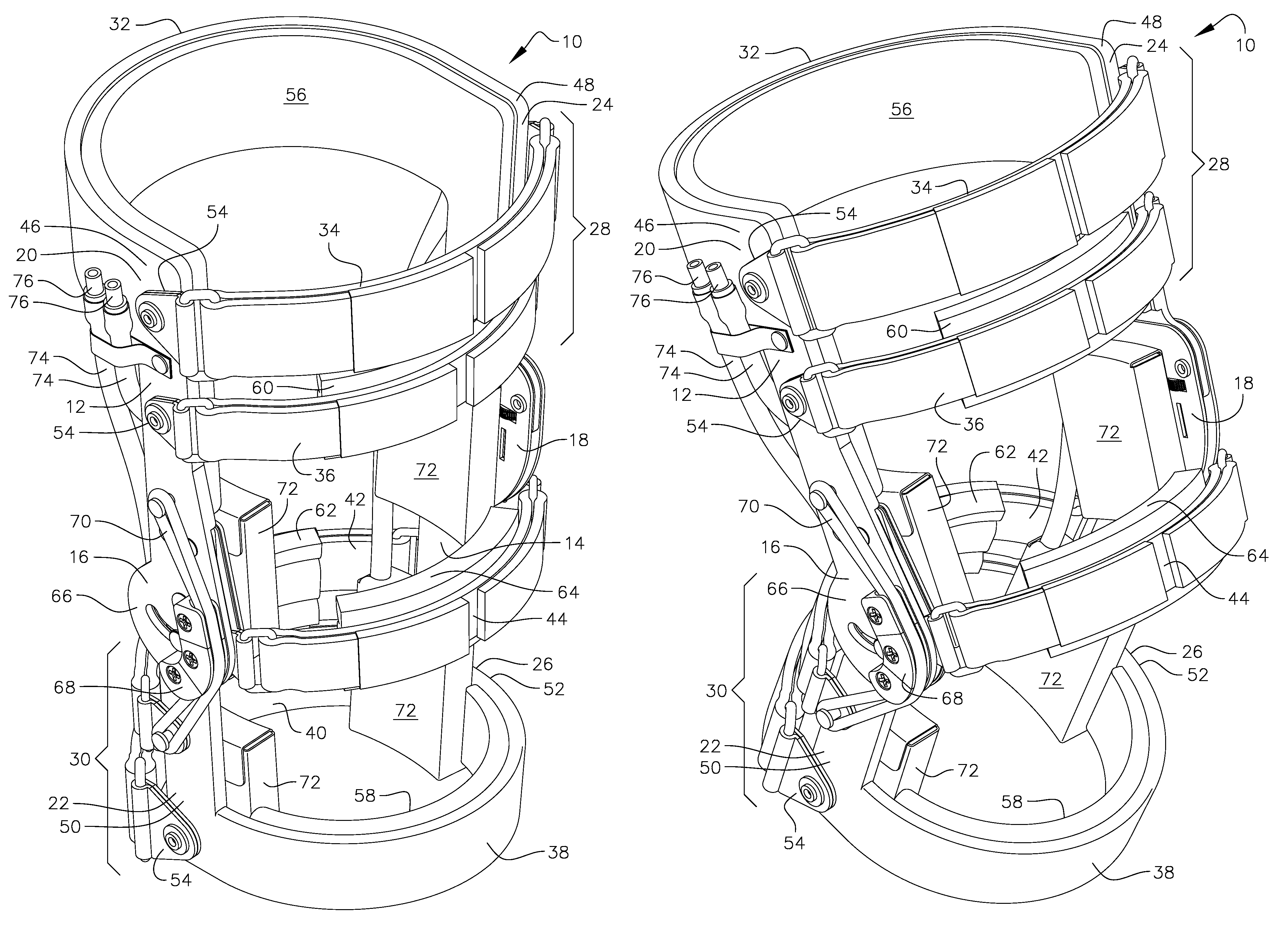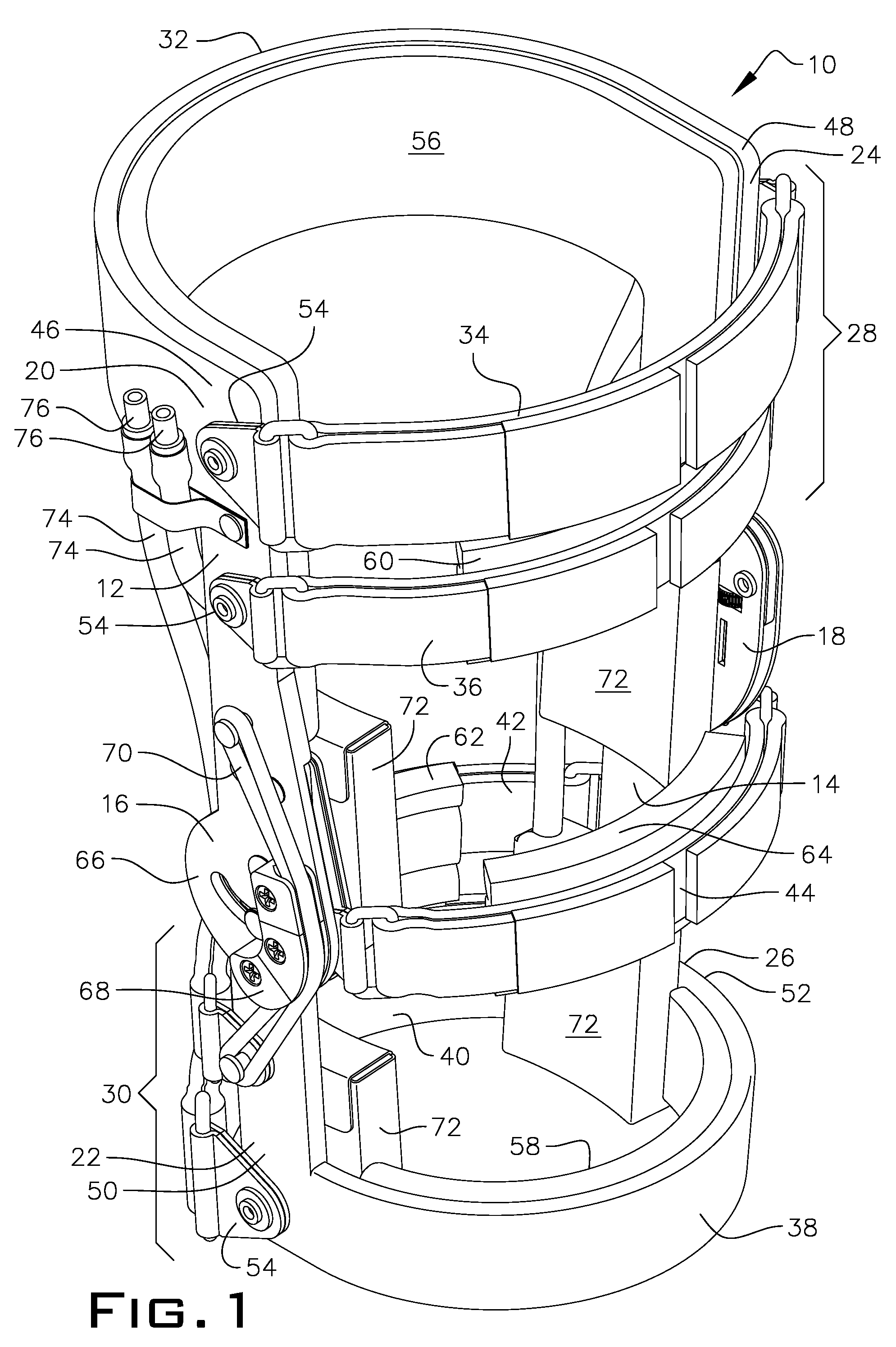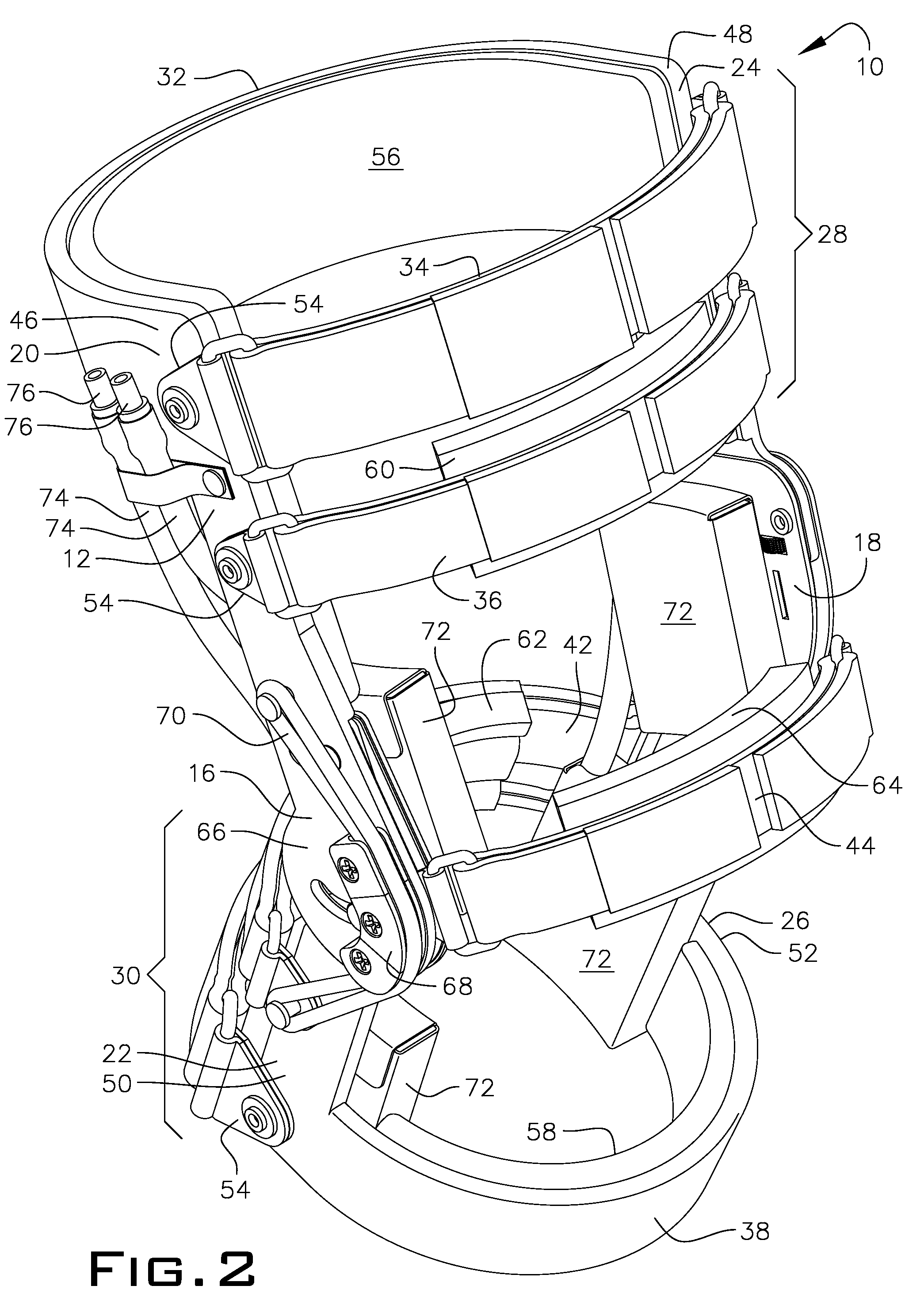Knee orthosis
a knee and orthosis technology, applied in the field of knee orthosis devices, can solve the problems of lateral rotational and anterior instability of the knee, predisposing the joint to further instability and more serious injury, etc., and achieves superior medial, lateral, and rotational support. , to facilitate a more normal gait
- Summary
- Abstract
- Description
- Claims
- Application Information
AI Technical Summary
Benefits of technology
Problems solved by technology
Method used
Image
Examples
Embodiment Construction
[0058]Throughout the following detailed description the same reference numerals refer to the same elements in all figures.
[0059]Referring to FIG. 1, a novel knee orthosis 10 of the present invention is shown, and hereinafter described, for use with a patient with a knee injury or for employment on leg of patient before or after surgery. It is important to note immediately that the novel knee orthosis 10 of the present invention can be used on the same patient before and after a surgical procedure to replace or repair an injured or diseased knee joint. No knee orthosis or brace hereto before has ever contemplated, let alone be employed, the use of the same orthotic device for pre and post-surgery. Therefore, knee orthosis 10 has all of the advantages as set forth above in the Summary of the Invention and improves upon and fixes all of the deficiencies as also described above, but generally discussed in the Background of the Art.
[0060]Knee orthosis 10, in a preferred embodiment, emplo...
PUM
 Login to View More
Login to View More Abstract
Description
Claims
Application Information
 Login to View More
Login to View More - R&D
- Intellectual Property
- Life Sciences
- Materials
- Tech Scout
- Unparalleled Data Quality
- Higher Quality Content
- 60% Fewer Hallucinations
Browse by: Latest US Patents, China's latest patents, Technical Efficacy Thesaurus, Application Domain, Technology Topic, Popular Technical Reports.
© 2025 PatSnap. All rights reserved.Legal|Privacy policy|Modern Slavery Act Transparency Statement|Sitemap|About US| Contact US: help@patsnap.com



